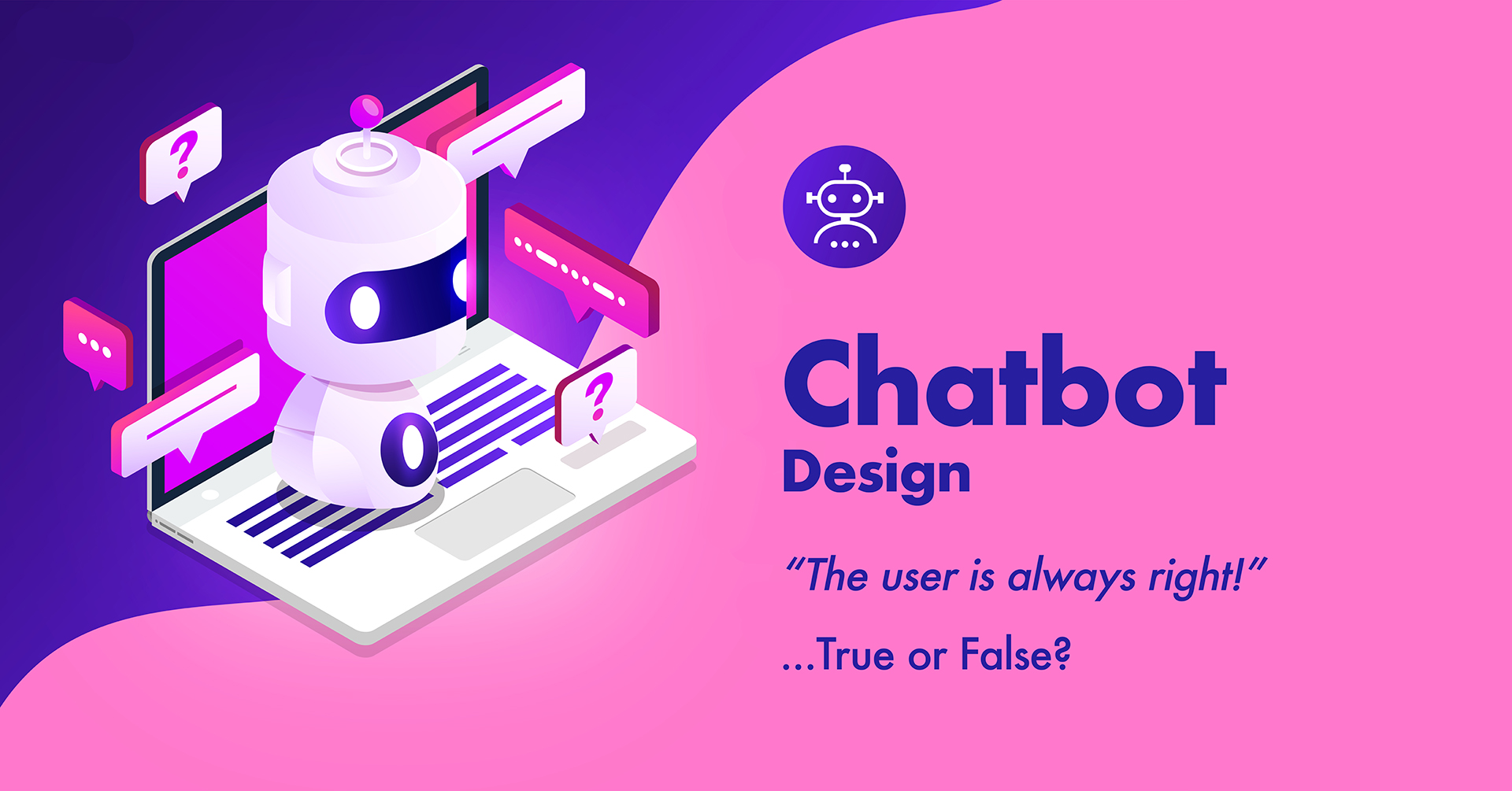Ever since I was little, I have been hearing this: “The customer is king!”
While this is an increasingly contested statement in the customer service world, it still remains a very popular one. It also serves to highlight who is the audience we should care about when it comes to experiences.
Customer loyalty is such a fleeting thing nowadays…
So, what should you do if you want to retain your clients? Provide them with a great experience, obviously… the same way 1 + 2 = 3, well GREAT + EXPERIENCE = RETURNING CUSTOMERS.
In the world of chatbots and virtual assistants the formula still applies, and it can be summarized as:
It’s all about the experience.
Whose experience? The users’ experience, of course!
But let’s rewind for a moment.


What is a chatbot? What is a virtual assistant?
In very simple terms, a chatbot is used to automate interactions with users.
Once the users’ needs are identified, the bot’s responses and actions are then defined by its creators. The chatbot’s ability to provide specific information and/or activate processes is thus established.
The terms “chatbots” and “virtual assistants” are often used interchangeably (including in this blog post). However, a distinction can be made.
Virtual assistants, which use artificial intelligence and machine learning, allow “free text”, meaning that users are not limited to a list of options. They can write to the chatbot as they would if a human was on the other side of the screen. In this case, the virtual assistant is able to recognize the intention behind the message sent and respond appropriately while keeping a natural and human tone. A good example of a technology that offers this kind of capability is IBM Watson Assistant.
It is actually thanks to IBM that I discovered conversational AI about a year ago, and since then I have continued to learn. If there is one conclusion I can draw today, it is that virtual assistants have not reached their full potential yet and will continue to evolve rapidly over the next few years.
Let’s get back to the topic: the users
Is it important to create user-centered designs? Definitely. And for virtual assistants, it is the kind of key element that will make or break it.ment that will make or break it.
Who are these famous users, you may ask?
Those for whom your virtual assistant is designed.
Let me give you an example, let’s say that as a bank you want to deploy a chatbot to answer your users’ questions while also automating some of their transactions. Who are the users here? Your customers.
Let’s try it again with a second use case: your support center is looking to deploy a virtual assistant to answer the most frequently asked questions by your employees. Quite obviously, here the users are the employees (example HERE).
In a project, you will often have a technical team, business analysts, UX designers, project managers, subject matter experts (SMEs), etc. Including multiple stakeholders in the design process is definitely important, but THE position to keep in mind? You guessed right, the users.
Believe me when I say it is incredibly easy to neglect who we are designing for. Even easier, but also worse? Missing the mark completely because the users’ needs got “forgotten” along the way.
How can we make sure to keep the design user-centered?

- Do a user research to better understand who you are talking to.
- Invite your users to participate in design workshops to give them the opportunity to express their point of view immediately and in a direct manner.
- Conduct user testing to ensure the delivered experience lives up to expectations.
You hit a snag? That is the point! Keep doing interactions WITH your users. Advocate for them so they do not get pushed aside when you start hearing comments like “we need to accelerate, is this really necessary?”.
But why is it so essential to focus on users? What is the added value?
If the users’ needs are neglected, there is a high chance they will not see the value of using what you designed, and all your investments will basically go down the drain … which is not what we want.
And this is all because if a good experience will keep your users coming back, a bad one will drive them away … and you only have one shot to impress them.
In an ideal world…
Your users would not need to adapt to your designs. Rather, your designs would be a perfect fit for your users as they would be adapted to their needs.
One key element to keep in mind and that should always be respected is the project scope. Knowing what the limits are, however, should not detract one from adopting user-centered good practices. It instead should further justify testing the designs, evaluating the user feedback, and then deciding whether the identified shortcomings should be addressed immediately (essential) or not (bonus).
This distinction (essential vs bonus) can be used by the decision-making team to validate that the design is going in the right direction, while also avoiding incurring unnecessary costs.
So, all this to answer the initial question
When it comes to the design of virtual assistant, is the user always right?
My short answer?
Yes.
We live in a human-centered society. It is important for any environment to adapt to those who live in it, and not the other way around.
My long answer?
Yes, but within reason.
Do you have to listen to what your users tell you? Absolutely.
Does it have to impact the project? Not always.

We now agree the user is a key element in the success of virtual assistant projects. We also know it is far from being the only factor that influences a project’s success. All the other existing factors (technology, budget, etc.) will undoubtedly impact our ability to bend over backwards just to please our users…
Conclusion
The user experience is important in virtual assistant projects but is not limited to them either. For example, in digital transformation and reinvention projects, the user experience is equally critical … and the list goes on.
User experience is a concept that holds an important place in other fields. I have a background in marketing, and I can assure you that the customer and the user experience bear many similarities, it is just a matter of perspective!
Should you wish to learn more about chatbots/virtual assistants, stay tuned! My next blog will be about Chatbots Do’s & Don’ts!
In the meantime, I invite you to join the conversation in our Linkedin group HERE.




